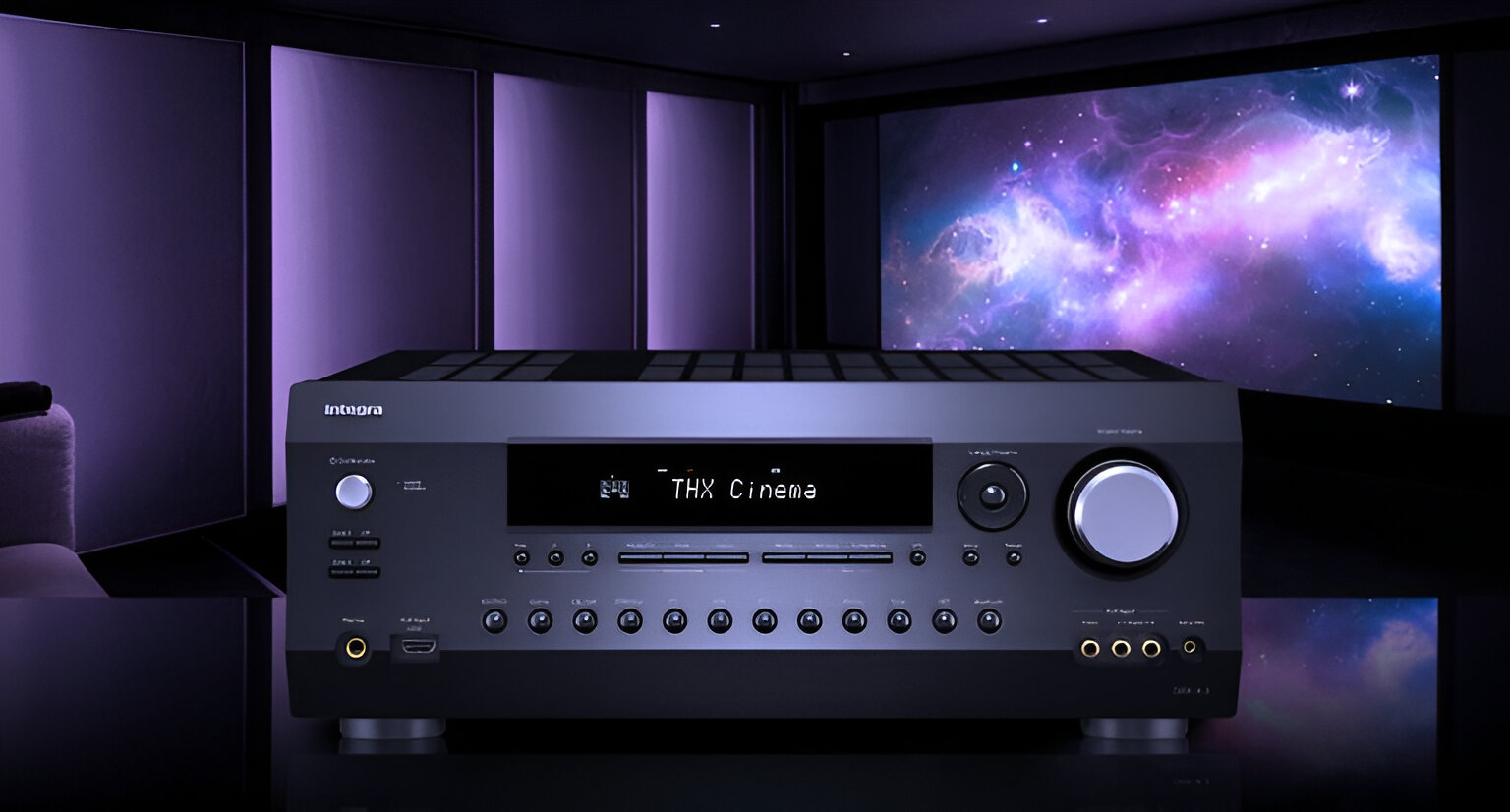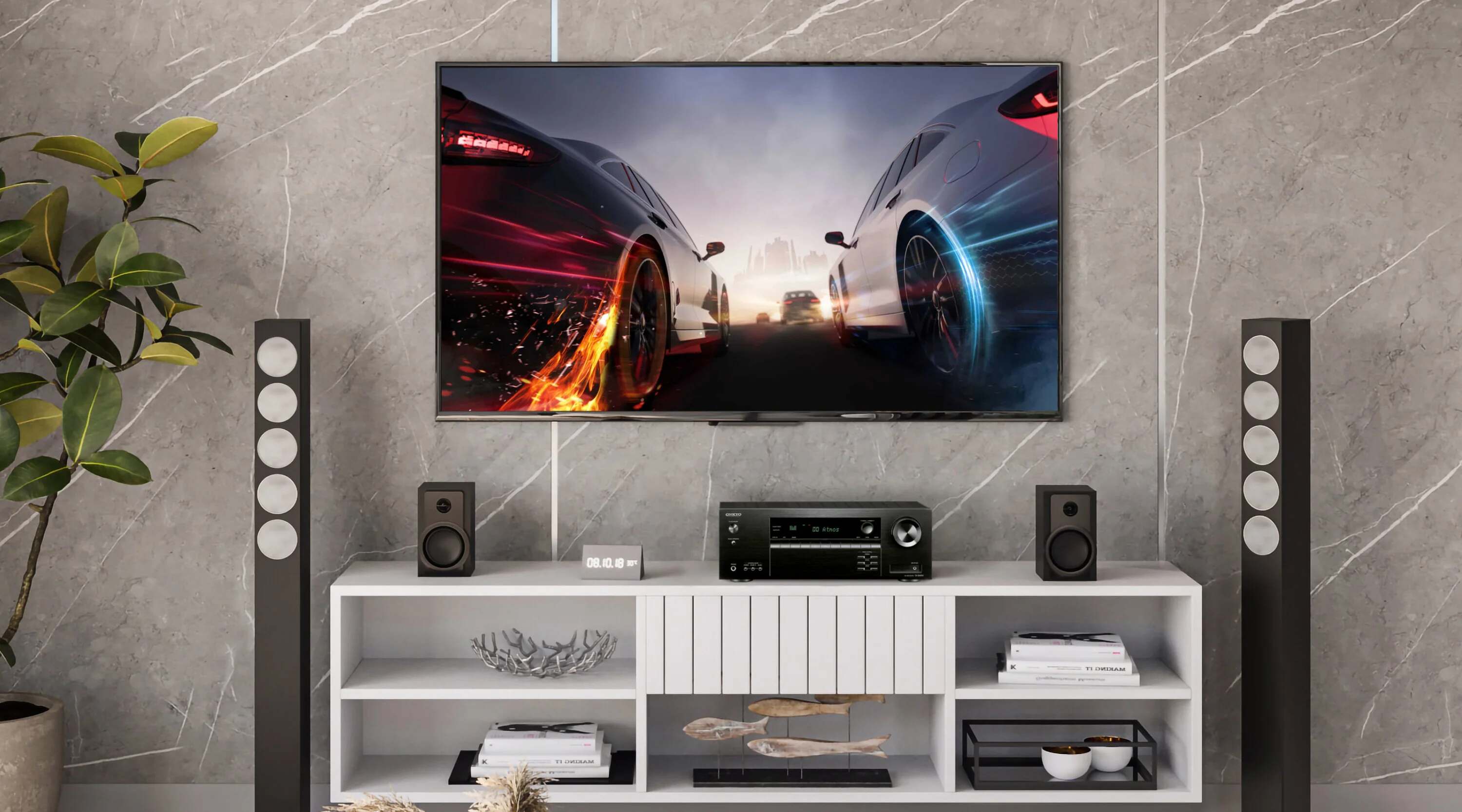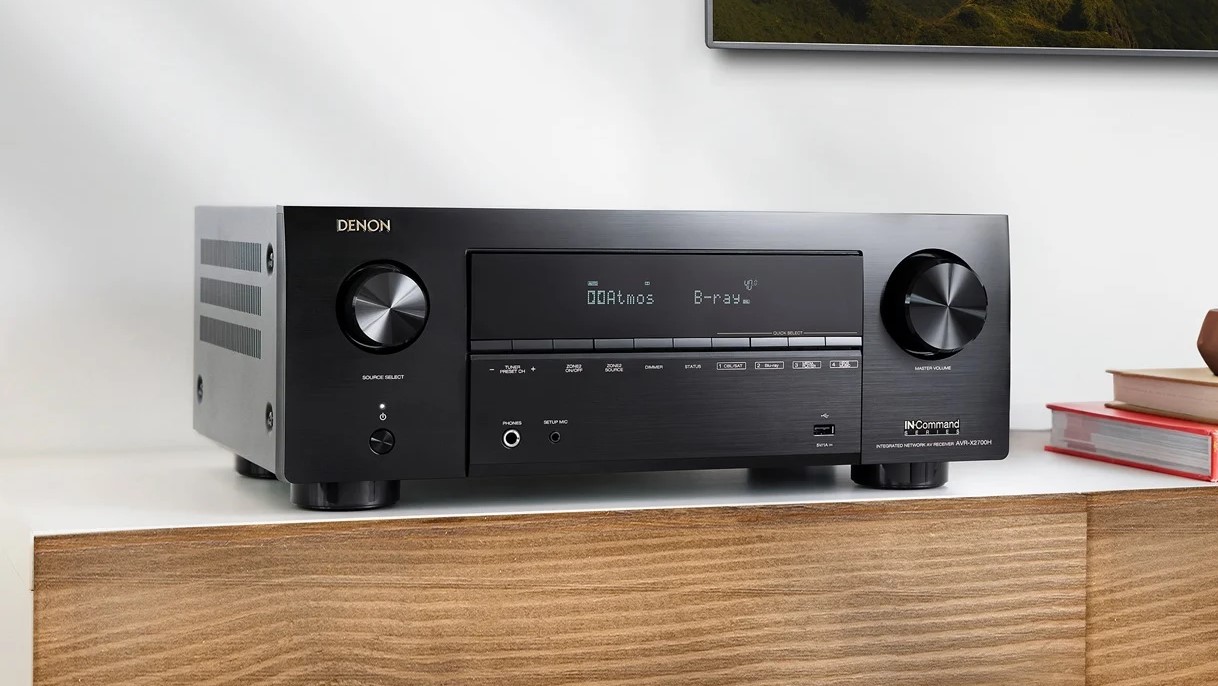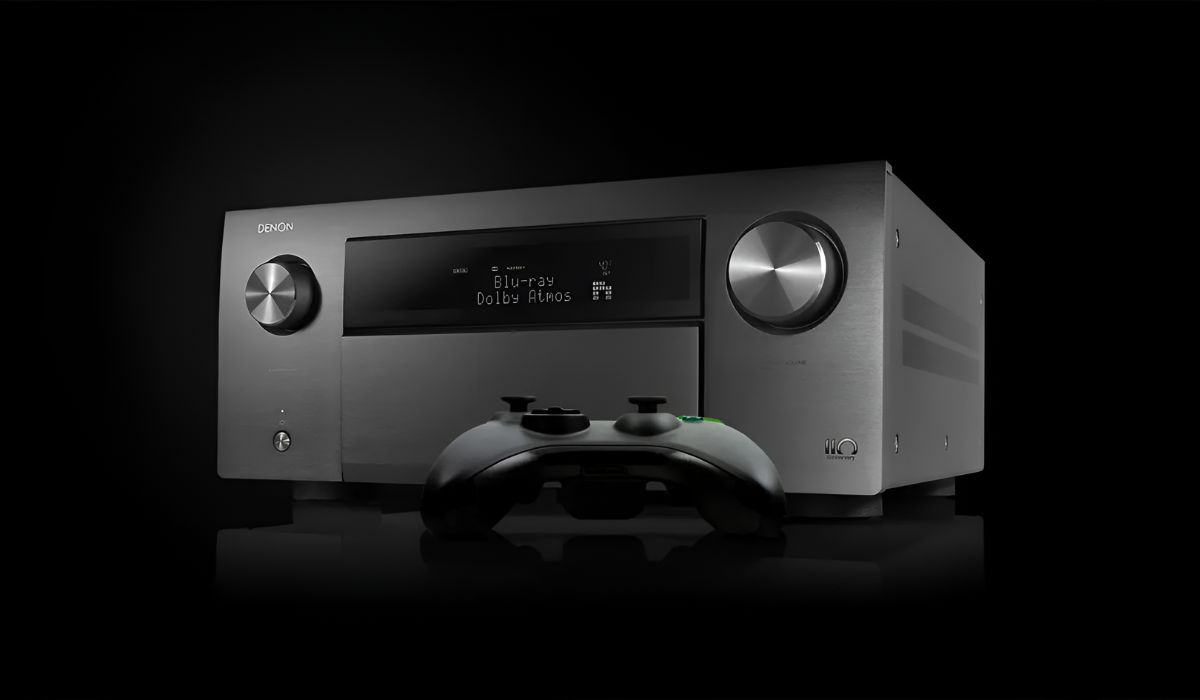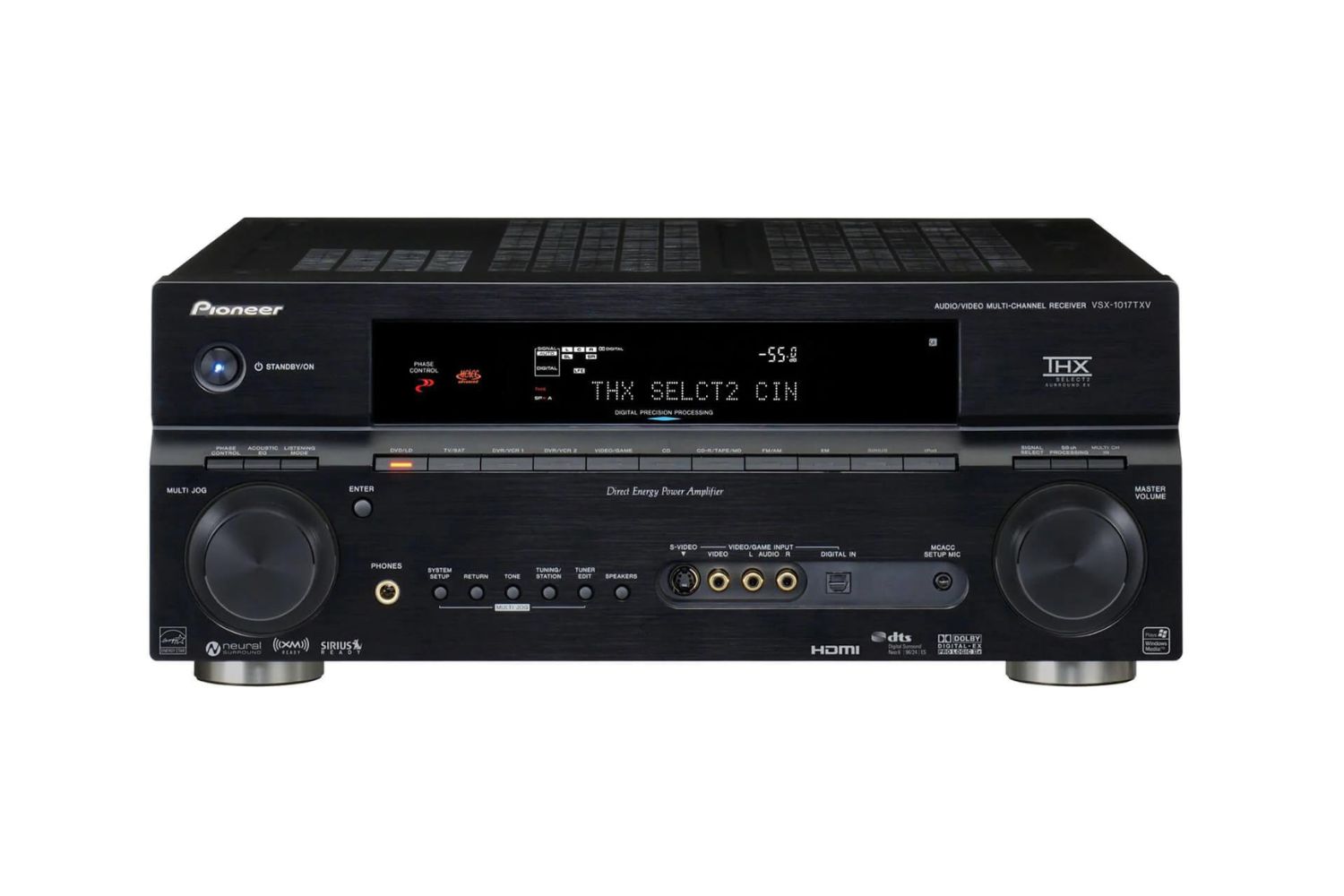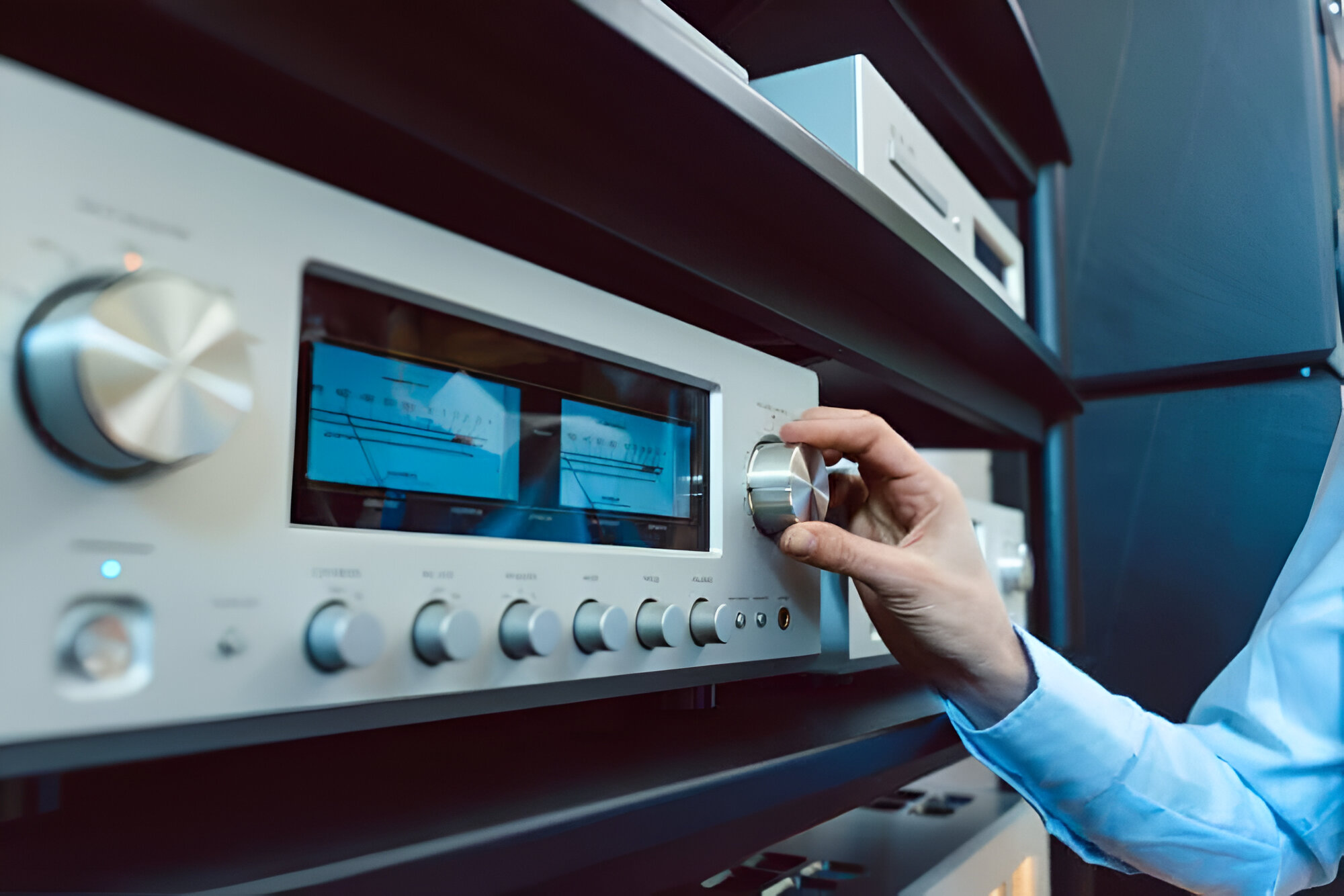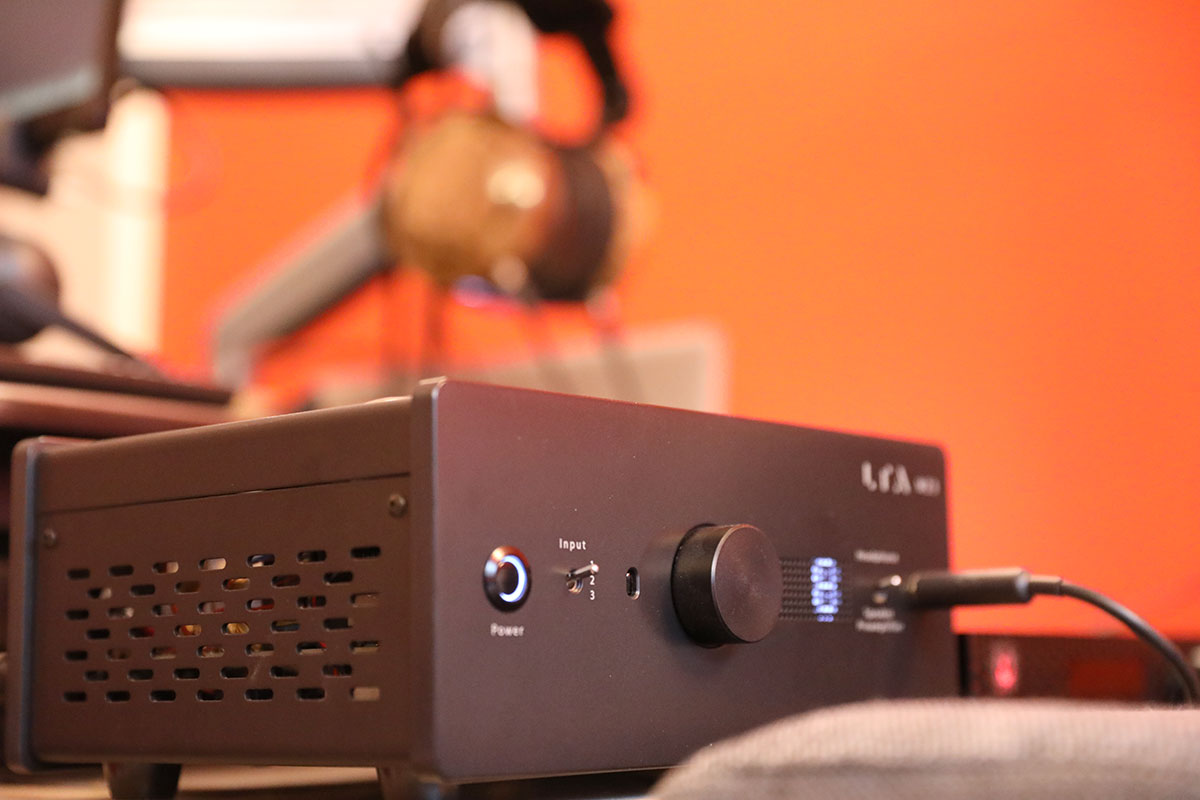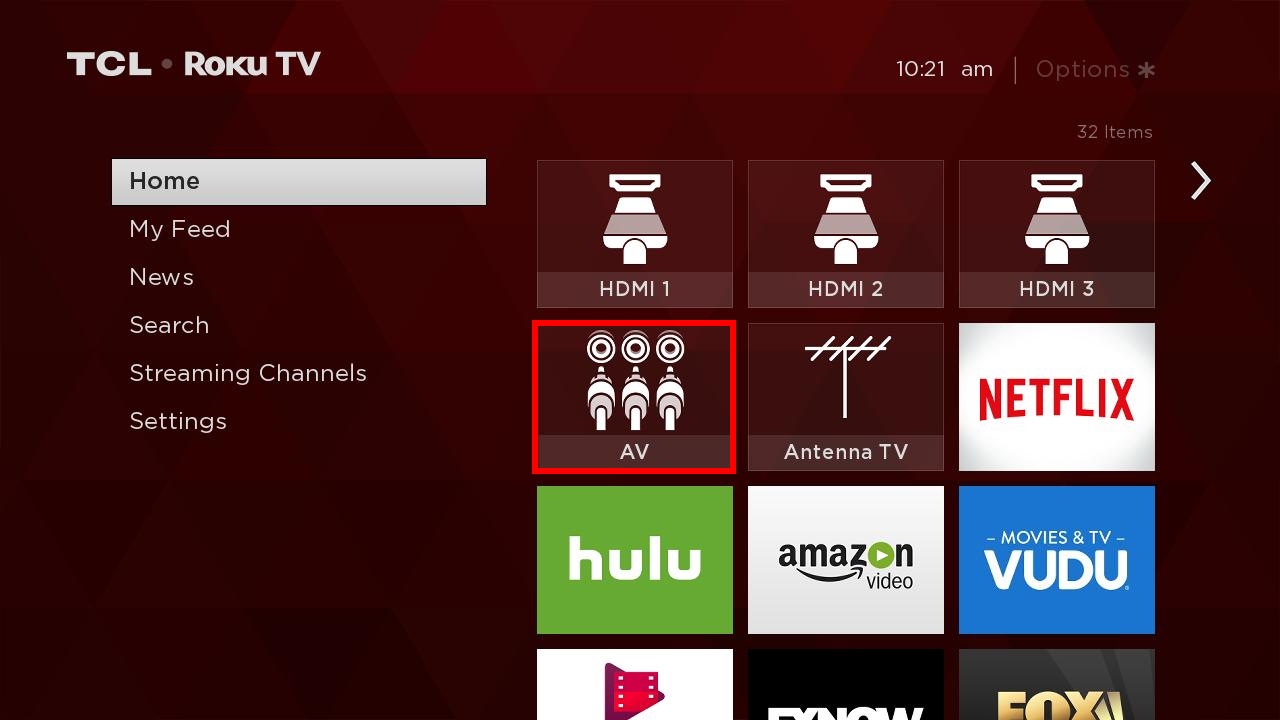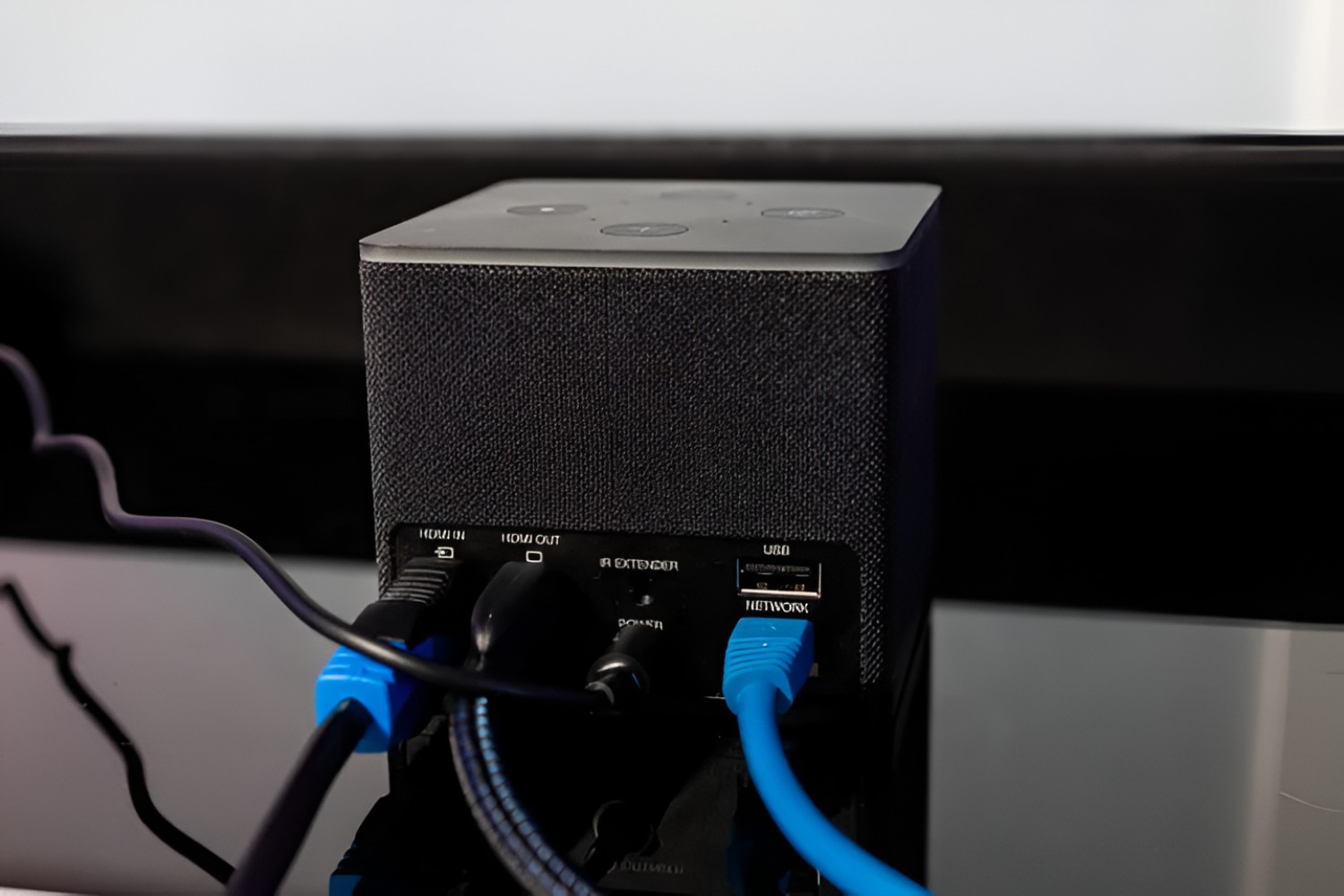Introduction
Welcome to the world of home entertainment, where the quality of your audio and visual experience can be greatly enhanced by a good AV receiver. Whether you're a cinephile, a music enthusiast, or a gaming aficionado, an AV receiver can serve as the heart of your home theater system, delivering immersive sound and seamless connectivity for all your media devices.
In this guide, we will delve into the essential features to look for in a good AV receiver, the benefits it brings to your home entertainment setup, and how to choose the right one to suit your specific needs. Whether you're a novice looking to upgrade your audiovisual setup or a seasoned audiophile seeking the latest innovations in home theater technology, this guide will equip you with the knowledge to make an informed decision.
As technology continues to advance, AV receivers have evolved to offer a wide array of features that cater to the diverse needs of modern consumers. From wireless connectivity and multi-room audio capabilities to support for the latest audio and video formats, the options can be overwhelming. However, understanding the key features and benefits of a good AV receiver will empower you to make a sound investment that elevates your home entertainment experience.
So, let's embark on a journey to uncover the world of AV receivers, explore the features that define a good one, and discover how it can revolutionize your audiovisual enjoyment at home. Whether you're seeking to create a cinematic experience in your living room or immerse yourself in high-fidelity music, a good AV receiver can be the cornerstone of your home entertainment sanctuary.
What is an AV Receiver?
An AV receiver, short for audio-video receiver, is the central hub of a home entertainment system. It serves as a powerhouse that combines audio and video processing, amplification, and connectivity functions in a single unit. Essentially, an AV receiver acts as a control center that brings together various audio and video sources, such as Blu-ray players, gaming consoles, streaming devices, and speakers, to deliver a cohesive and immersive multimedia experience.
At its core, an AV receiver functions as a sophisticated audio amplifier, driving the sound output to speakers and creating a captivating auditory environment. In addition to amplification, modern AV receivers are equipped with advanced audio processing technologies that decode and enhance audio signals, ensuring high-fidelity sound reproduction.
Moreover, AV receivers are designed to handle video signals, serving as a switcher and processor for video sources. They support various video formats and resolutions, allowing seamless integration of multiple video devices, such as TVs, projectors, and gaming displays, into a unified entertainment system.
One of the key features of an AV receiver is its ability to decode and process surround sound formats, such as Dolby Atmos and DTS:X, to create a captivating audio experience that envelops the listener. This capability is particularly essential for home theater setups, where immersive sound reproduction is paramount to achieving a cinematic atmosphere.
Furthermore, AV receivers often incorporate networking and wireless connectivity features, enabling seamless streaming of audio and video content from mobile devices, computers, and online services. This connectivity versatility allows users to access a wide range of media sources and enjoy content from various digital platforms.
In essence, an AV receiver acts as the nerve center of a home entertainment system, providing the essential functions of audio and video processing, amplification, and connectivity. Its role in orchestrating a seamless and immersive multimedia experience makes it a fundamental component for anyone seeking to elevate their audiovisual enjoyment at home.
Features to Look for in a Good AV Receiver
When considering the purchase of an AV receiver, several key features distinguish a good model from the rest. Understanding these features will empower you to make an informed decision that aligns with your specific audiovisual needs and preferences.
- Audio Decoding and Processing: A good AV receiver should support the latest audio formats, such as Dolby Atmos, DTS:X, and IMAX Enhanced, to deliver immersive and three-dimensional sound experiences. Look for advanced audio processing capabilities that enhance sound quality and create a realistic audio environment.
- Amplification and Power: The amplifier section of an AV receiver is crucial for driving speakers and delivering high-quality sound. Consider the power output per channel, measured in watts, to ensure that the receiver can effectively drive your speakers and accommodate your listening preferences, whether it’s for a small room or a spacious home theater.
- Video Connectivity and Processing: Look for an AV receiver with multiple HDMI inputs and outputs that support the latest video standards, including 4K Ultra HD, HDR (High Dynamic Range), and HDMI 2.1 for future-proofing. Advanced video processing features, such as upscaling and passthrough of video signals, contribute to a seamless and visually stunning viewing experience.
- Wireless and Network Connectivity: In the digital age, wireless connectivity is paramount. A good AV receiver should offer Wi-Fi, Bluetooth, and Ethernet connectivity options for streaming music, accessing online content, and integrating with smart home ecosystems. Support for multi-room audio and streaming services adds versatility to your entertainment setup.
- Room Calibration and EQ: Built-in room calibration technology, such as Audyssey, Dirac Live, or proprietary systems, can optimize audio performance based on your room’s acoustics. Look for receivers with advanced EQ (equalization) capabilities to tailor the sound output to your listening environment.
- Multi-Zone and Multi-Room Audio: If you desire audio distribution to multiple zones or rooms, seek an AV receiver with multi-zone/multi-room capabilities. This feature allows you to enjoy different audio sources in various areas of your home simultaneously.
- Streaming and App Integration: Consider receivers that offer seamless integration with popular streaming services and mobile apps. The ability to control and stream content from your smartphone or tablet enhances the overall user experience.
- User Interface and Remote Control: An intuitive and user-friendly interface, along with a well-designed remote control, contributes to the ease of operation. Look for receivers with responsive and intuitive interfaces, as well as app-based control options for added convenience.
By prioritizing these essential features, you can identify a good AV receiver that aligns with your audiovisual aspirations and seamlessly integrates with your home entertainment ecosystem.
Benefits of Using a Good AV Receiver
Investing in a good AV receiver offers a myriad of benefits that significantly enhance your home entertainment experience, whether you’re immersing yourself in blockbuster movies, enjoying high-fidelity music, or indulging in immersive gaming adventures. Let’s explore the compelling advantages of incorporating a high-quality AV receiver into your audiovisual setup.
- Immersive Surround Sound: A good AV receiver unlocks the potential for immersive surround sound experiences, bringing cinematic audio realism into your living space. With support for advanced audio formats like Dolby Atmos and DTS:X, the receiver creates a three-dimensional soundstage that envelops the listener, heightening the emotional impact of movies, music, and games.
- High-Fidelity Audio Reproduction: Advanced audio processing and amplification capabilities ensure that every sonic detail is faithfully reproduced, delivering pristine audio quality that captures the nuances of musical performances and the dynamics of movie soundtracks. Whether you’re a discerning audiophile or a casual listener, a good AV receiver elevates your appreciation of sound.
- Seamless Connectivity and Integration: By serving as a central hub for audio and video sources, an AV receiver simplifies the connectivity of your media devices, making it effortless to switch between different sources and enjoy a diverse range of content. Wireless and network connectivity options further expand your access to streaming services and digital libraries, enhancing your entertainment choices.
- Optimized Room Acoustics: Many high-quality AV receivers feature room calibration and EQ technologies that adapt the audio output to suit the unique acoustics of your listening environment. This optimization ensures that the sound is tailored to your room, mitigating acoustic imperfections and delivering a more balanced listening experience.
- Enhanced Video Performance: With support for the latest video standards and advanced video processing capabilities, a good AV receiver contributes to stunning visual experiences. Whether you’re watching movies in 4K Ultra HD with HDR or gaming on a high-resolution display, the receiver ensures that the video signals are handled with precision and clarity.
- Multi-Room Audio Flexibility: For those seeking to extend their audio enjoyment throughout their home, a good AV receiver with multi-room/multi-zone capabilities enables seamless audio distribution to different areas, allowing family members to enjoy personalized content in various rooms simultaneously.
- Future-Proofing and Upgradability: By selecting a high-quality AV receiver with advanced features and future-proof connectivity options, you can ensure that your home entertainment system remains relevant and adaptable to evolving technologies. This longevity provides peace of mind and the potential for future system expansions.
Overall, the benefits of using a good AV receiver encompass an enriched audiovisual experience, seamless integration of multimedia devices, and the ability to tailor the entertainment environment to your preferences, culminating in a truly immersive and enjoyable home entertainment setup.
How to Choose the Right AV Receiver for Your Needs
When embarking on the journey to select an AV receiver that aligns with your specific audiovisual requirements, several key considerations can guide you toward making an informed and satisfying choice. By evaluating these factors, you can ensure that the AV receiver you select complements your entertainment preferences and seamlessly integrates with your existing multimedia setup.
- Assess Your Audiovisual Goals: Begin by defining your primary usage scenarios. Are you primarily interested in creating a home theater experience, indulging in high-fidelity music listening, or both? Understanding your usage patterns will help prioritize the features that are most relevant to your needs.
- Speaker Configuration and Power Requirements: Evaluate the number and type of speakers in your setup, as well as their power requirements. Ensure that the AV receiver’s amplifier section can effectively drive your speakers, delivering the desired sound levels and fidelity for your listening environment.
- Audio and Video Format Support: Consider the audio and video formats that are essential to your entertainment preferences. Whether it’s immersive surround sound formats like Dolby Atmos or video standards such as 4K Ultra HD with HDR, ensure that the receiver supports the necessary formats to accommodate your media sources.
- Connectivity and Integration: Assess the connectivity options that align with your media devices. Whether you require multiple HDMI inputs for gaming consoles and streaming devices, wireless streaming capabilities for music, or network connectivity for accessing online content, choose a receiver that seamlessly integrates with your existing devices and digital libraries.
- Room Acoustics and Calibration: If your listening environment presents acoustic challenges, consider receivers with built-in room calibration and EQ technologies. These features optimize the audio output based on your room’s acoustics, ensuring that the sound is tailored to provide an immersive and balanced listening experience.
- Future-Proofing and Expandability: Anticipate your future entertainment needs and consider receivers with advanced features and upgradability options. Future-proof connectivity standards and expandable multi-room capabilities can ensure that your AV receiver remains relevant as your entertainment ecosystem evolves.
- User Interface and Ease of Use: Evaluate the receiver’s user interface and control options. Intuitive menu navigation, responsive remote controls, and app-based management can contribute to the overall ease of operation, enhancing your enjoyment of the receiver’s features.
By carefully considering these factors and aligning them with your specific entertainment goals, you can confidently select the right AV receiver that serves as the cornerstone of your home entertainment system, delivering immersive audiovisual experiences tailored to your preferences.







